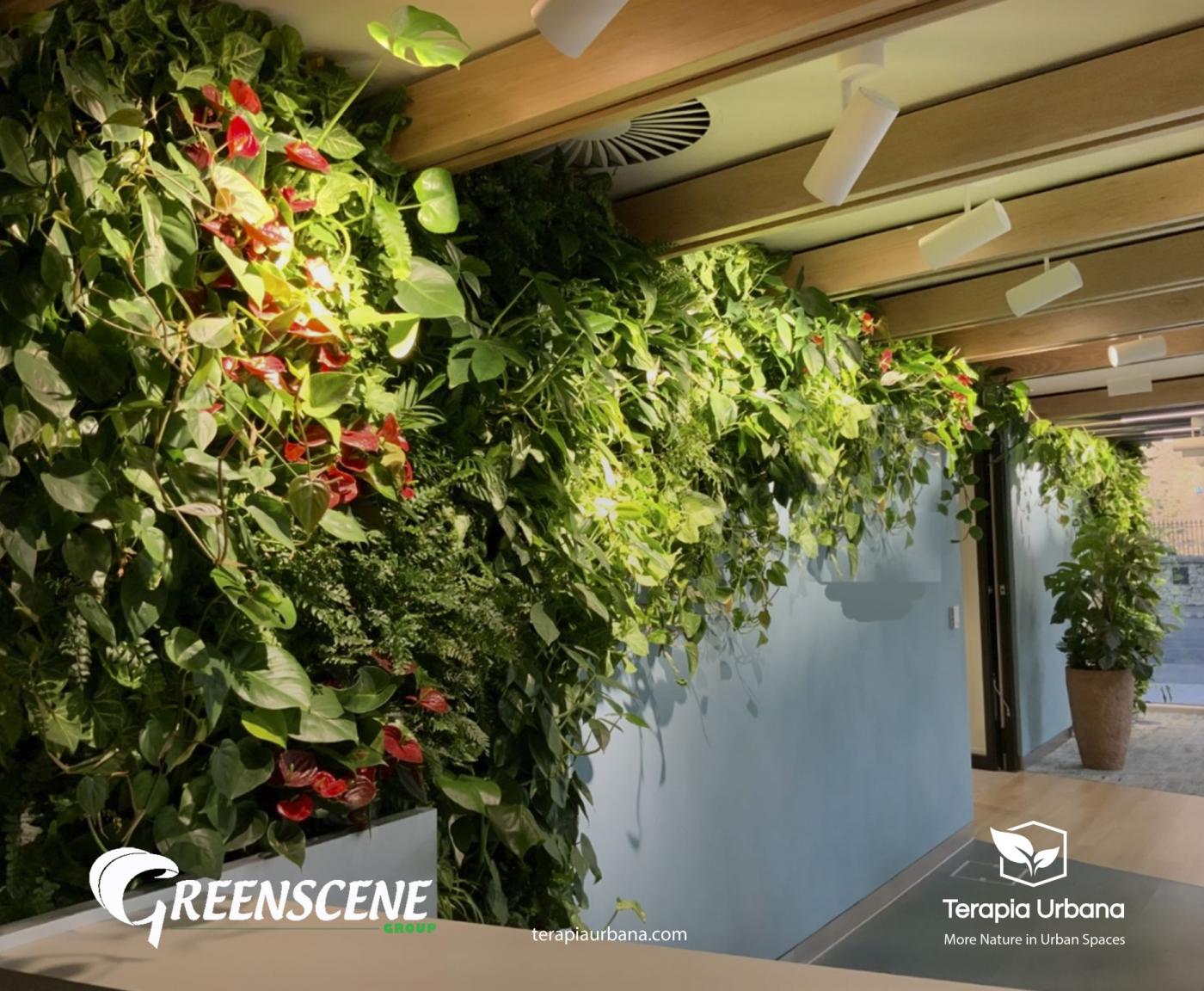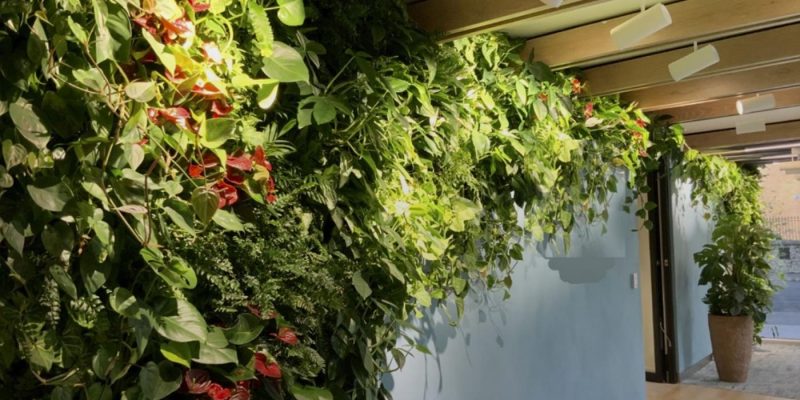
Garden lighting is a crucial aspect that cannot be overlooked when designing and maintaining a living wall, as it has a significant impact on plant growth and health.
Light is the engine that drives photosynthesis, the vital process in which plants convert light energy into nutrients. Therefore, understanding the surrounding lighting conditions and choosing the right type of light for your a living wall is critical to its success.
When considering lighting for a living wall, it is essential to assess the amount and quality of light available in the area in which it will be located. Factors such as the orientation of the garden (north, south, east or west), the shadow cast by nearby buildings or trees, and the amount of direct or indirect light it receives during the day are elements that must be taken into account. In addition, the weather and the season of the year can also affect the availability of sunlight.
It is important to take into account the quantity and quality of light that each plant will receive depending on its location and orientation in the a living wall
Natural sunlight
There are different types of garden lighting that can be used in a a living wall, such as natural light, artificial light or a combination of both. The selection will depend on the specific characteristics of the environment and the plants that have been chosen.
A common option for providing light in a living wall is to use natural sunlight. Plants need different levels of light depending on their species, so it is important to know the individual needs of each selected plant. Some plants require full sun and should be located in areas exposed to direct sunlight for several hours a day, while others do best in areas with indirect light or partial shade.
These differences must be taken into account when arranging the plants in the living wall to ensure that each receives the right amount of light.
It is important to classify plants according to their light needs and group them according to their tolerance of different levels of light and shade. In this way, they can be distributed more effectively in the garden.
The quantity and quality of light, the daily duration of exposure to lighting is also relevant. Most plants require a period of darkness to rest and carry out important internal processes.
It is essential to also take into account the duration of light exposure, as it varies depending on the time of year and geographic location. This is especially relevant if you want the living wall to remain healthy and in optimal condition throughout the year.
Garden lighting with LED artificial light
It may be necessary to supplement natural light with artificial lighting, especially indoors or in areas with little sun exposure.
LED lights are a great option for this, as they are energy efficient and can be adjusted to provide different spectrums of light depending on the needs of the plants.
When choosing artificial lights, it’s important to consider the right color temperature and light intensity for healthy plant growth.
It is important to ensure that the plants receive the amount of light energy they need according to their location and type of lighting, in order to achieve their proper growth and conservation.
If you are a professional and need advice on the subject of lighting, design and incorporation of a living wall in your project, we can help you, shall we talk?

